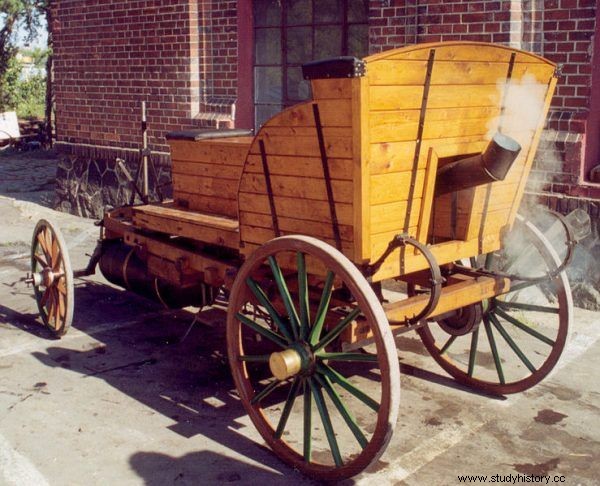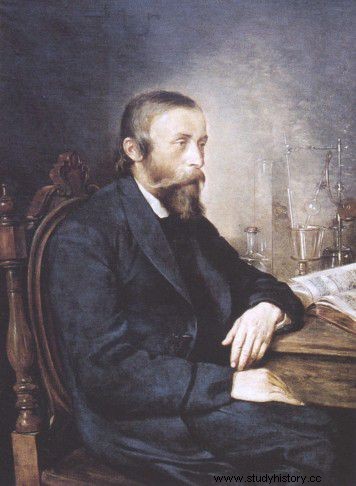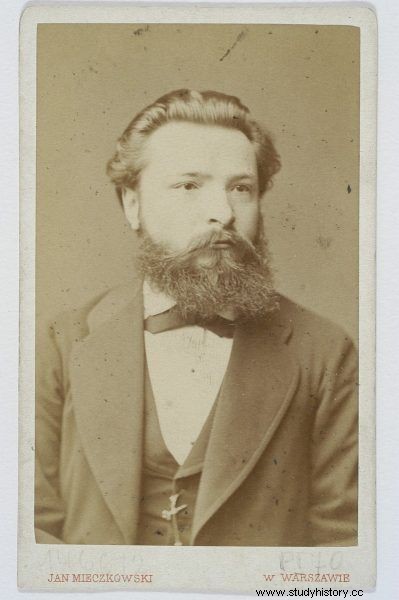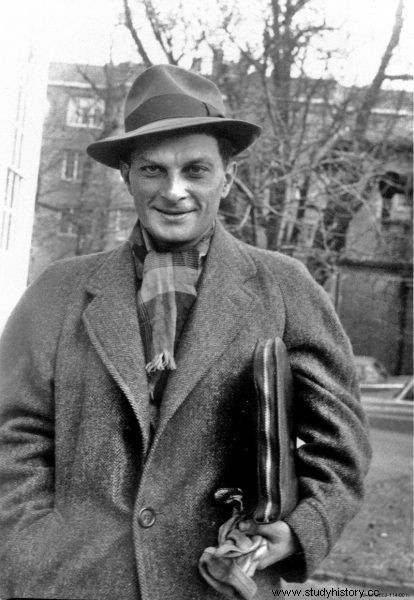The history of Poland abounds in interesting characters, among whom there is no shortage of inventors. But not all of them are popular, moreover:some of them were not even considered Poles for many years!
Here is a list of inventions, many of which we use or have used every day, created by people of Polish descent. And although it is difficult to objectively assess which are the most useful, most used or had the greatest impact on the development of civilization, it is difficult to resist the temptation to arrange them in some order.

We owe a lot of useful inventions to Poles. Why do we know so little about them?
So, the ten most important Polish inventions are listed here from the most useful (according to the author) to the least useful. Of course, everyone may have a different opinion on this, but we will just have to accept it…
1. Monocrystals, Czochralski method:Jan Czochralski
Few people are aware that Jan Czochralski is the most cited scientist of Polish origin. Not only that, this man is known in the world as the "father of electronics" This is thanks to the method he invented to obtain single crystals of metals, which are used today for the production of electronic components. Nevertheless, for many years Czochralski did not exist in the history of our country - he was "officially forgotten" by the communist authorities, while in the Great Soviet Encyclopedia he was listed as… Czech. But politics aside - what was it like with semiconductors and the famous Czochralski method?

Silicon single crystal obtained by the Czochralski method
One day in 1918, Jan Czochralski, who was already the head of the metallurgical laboratory of the AEG concern in Berlin, accidentally immersed the nib of his pen in a tank with liquid tin, instead of in an inkwell. He quickly noticed that the metal froze in the form of a thin thread, assuming a form and properties unprecedented in nature. Earlier, Czochralski had the opportunity to work in a pharmacy, where the quality of petroleum jelly was tested in a similar way. So he was aware that the tin thread he had accidentally created was in fact a single crystalline entity. As it was to turn out soon, the possibilities of such a single crystal are very large…
Soon Czochralski's work was picked up by Gordon K. Teal, who used it to create a single crystal of germanium. In this way, he initiated the use of the method in the world of electronics. Soon there was to be a real technological explosion, thanks to the perceptive Czochralski.
2. Radiomicroscope:Jan Czochralski
The second of the inventions created by Czochralski - just as unconsciously as in the case of the first - is the radiomicroscope. When he was developing his apparatus for examining metal samples, he did not think that a scanning microscope would be created on its basis enabling very detailed observations of the topography of various materials.

J. Czochralski, around 1910
The operation of the Czochralski device was based on a precise scanning of the sample with a special needle - when it hit a non-metallic fragment, radio noise was heard in the headphones. This essentially simple solution, which is basically a combination of a crystal radio with a microscope, made it possible to create a precise map of the observed materials. Today there are many varieties of microscopes that use a similar principle of operation and are suitable for a variety of purposes.
3. Bulletproof vest:Jan Szczepanik and Kazimierz Żegleń
The history of the invention of the bulletproof vest is associated with not one, but two Poles:Jan Szczepanik, who came from Rudniki near Mościska, and the clergyman Kazimierz Żegleniu from Kaczanówka near Tarnopol. It all started when the first of the heroes already had a well-established reputation as an inventor and genius, having improved the weaving industry with his jacquard machines controlled by means of perforated cards (we decided not to include this invention in the compilation). But he did not create the prototype ...

A test of a bulletproof vest constructed by Jan Szczepanik from the bulletproof fabric Żeglenia. 1901
In 1893, Carter Harrison was murdered, which, according to historians, had a major impact on the work of Kazimierz Żeglenia. The clergyman then residing in the USA decided to invent armor that could protect important people from attackers. He set to work with a sense of a momentous mission and… it worked! The material he built was able to stop bullets fired from a firearm. The first prototypes, which Żegleń tested many times (even on itself), consisted of the "Aberdeen" fabric, under which animal hair was attached, and sheets of impregnated silk fabric. The final proof of the effectiveness of the Sailing armor was demonstrated in 1897. There was only one problem:the production of en masse vests was not possible by following the method adopted by their creator. Machines were needed!
Soon Żegleń met the famous Szczepanik. They signed a contract - which, in the opinion of some, was harmful to Żeglenie - under which Szczepanik's plant was to develop a method of mass production of bulletproof armor. Szczpanik's contribution turned out to be invaluable, and although there was a dispute between the inventors over the right to call themselves the creator of the bulletproof vest, today they play this role together.
4. Passenger car:Józef Bożek
Józef Bożek is another Polish inventor to whom Czech nationality has been attributed for many years. He was an inventor whose ideas and machines were told fantastic stories and at the same time lived in poverty. Despite the fairly high publicity, he failed to turn his talent into money.
When Bożek started building his car, steam engines were already quite common. They were used in mines and steel mills, steam railway was also gaining popularity ... But no one thought that steam energy could be used for private purposes! Bożek started to implement such an idea, deprived of funds, but supported by his colleagues and his superior, Franciszek Gerstner.

Replica of Józef Bożek's steam vehicle
He started the project with miniaturization:he designed and built a compact steam engine that could power a wide variety of devices. In 1815 it was this power unit that powered the prototype of a passenger vehicle. According to the contemporary analysis of Bożek's mobile, it had all the features of today's everyday cars:low weight, steering with a steering wheel, speed regulation and brake, suspension on springs and the engine without a heavy flywheel (necessary in larger constructions).
Unfortunately, Józef Bożek had as much talent in his life as bad luck . His project did not receive enough fame and resources to allow production to continue on a larger scale. Moreover, all the money collected during the show in 1817 ... was stolen. This had a tragic impact on the ambitious designer who, according to some reports, destroyed the car prototype.
Until the end of his life, he dealt with mechanisms - repairing clocks, building water supply devices, designing railway carriages. After his work, mainly exhibits remained in the museum of the Technical University in Prague.
5. Oil lamp:Ignacy Łukasiewicz
The device itself, which is a kerosene lamp, does not seem very important to mankind. But the truth is that Ignacy Łukasiewicz had to obtain kerosene to construct it first, and thus laid the foundation for the oil industry! It remains a matter of debate whether this branch of human activity has actually turned out well for us, or exactly the opposite, but the Łukasiewicz lamp certainly deserves a place in the ranking.
Interestingly, the scientist from Zaduszniki did not plan to build a lamp. He was refining crude oil :after fractionated distillation at 250 degrees, it separated heavy hydrocarbons from the preparation, and then refined the product with a solution of sulfuric acid. The result of this process was pure kerosene. To check the quality of the fluid obtained, Łukasiewicz had to burn it under controlled conditions, observing the amount of smoke produced (pure kerosene does not smoke). At first, the scientist wanted to use previously known oil lamps, but their fuel tanks could not withstand kerosene.

Ignacy Łukasiewicz
This is how, at the turn of 1852 - 1853, the Pole gave rise to one of the most powerful branches of modern industry, creating a fuel that is more efficient and cheaper to produce than previously known oils.
6. Fluorescent lamp:Stefan Pieńkowski
For many years, fluorescent lamps have been a triumph in offices, factory halls and schools. This was due to their longevity and energy efficiency, much greater than standard incandescent lamps. Today, fluorescent lamps are gradually replaced by LED lamps, but certainly words of appreciation for their inventor are indicated here.
Long before the invention of fluorescent lamps, in the nineteenth century, it was known that sucking air from a glass tube causes the tube to glow. The color of the light was influenced by the noble gas it contained, for example neon lights red. It soon turned out that mercury vapor left in such a tube emitted UV radiation. And here comes a certain Pole and his research ...
Stefan Pieńkowski, a physicist considered today the father of Warsaw experimental physics, checked which chemical compound could filter the radiation emitted by mercury vapor so that only visible light was released. And he succeeded - in 1938 the first fluorescent lamp was probably built in in the hands of a Polish scientist. We will probably not find out if it was really there. Polish fluorescent lamp technology did not have a chance to develop due to the outbreak of World War II, while parallel research conducted in the USA brought the expected success ...
7. Walkie - talkie:Henryk Magnuski
The inventor of the device that changed the work of the police or the army, was born in Warsaw on January 30, 1909. In 1939, as an employee of the Radio and Telecommunications Works, he was sent to New York for training, where he had to stay due to the outbreak of World War II.
He started working for the Galvin Manufacturing Corporation, which in 1947 transformed into what is known today Motorola. It was here that he invented the SCR-300 radio, then weighing 17 kilograms, with a range of about 15 kilometers.
It should be remembered that the radio stations used so far by the military were so large that they could not be moved on foot. It was only Magnuski's work that allowed to change this:in the first model of walkie-talkies there were as many as three solutions patented by a Pole!

Henryk Magnuski
Of course, shortwave communication technology has developed further, to such an extent that even toys are equipped with it today. Magnuski, however, did not stop at the walkie-talkie. He also invented the beacon - a device that helped fighter pilots find the carrier in bad weather conditions. He has developed thirty patents in total.
8. Telectroscope:Jan Szczepanik and Julian Ochorowicz
Szczepanik and Ochorowicz's telectroscope was the progenitor of today's TV sets. The device transmitted clear images and sounds at a distance, but never became widely used. It was only thanks to the research of Constantin-Louis Senlecq and Adriano de Paiva that the TV set became popular and popularized ... However, it was Polish inventors who published information about the device first!
Ochorowicz worked on selenium plates, which can be used to transmit information about the light falling on them. He published his observations in the "Kosmos" magazine in 1878, guessing that there was really little left to create a device transmitting sound together with an image - after all, the Bell device was already known at that time!

Julian Ochorowicz in the photo of Jan Mieczkowski
It was only in 1897 that Ochorowicz found out about Szczepanik, who also constructed his device with a selenium photocell. As a receiver, Szczepanik used a mirror system. Julian Ochorowicz contacted him and offered to cooperate. The result was the improvement of the telectroscope and work on the introduction of the device for general use, which lasted until 1898, and then ... Suddenly they ended. Why? Some information points to a lack of funding and technological shortages. Other premises suggest that the inventors quarreled and resigned from cooperation. Szczepanik even patented the device, and Mark Twain was delighted with it in his articles. That didn't change the fact, however, that the telectroscope turned out to be a dud that would soon be completely dominated by the television.
9. Car wipers:Józef Hofmann
Sometimes very important inventions are very small and seemingly simple. Such, for example, a paperclip, without which an avalanche of loose pages would have covered many accountants, seems obvious to us today. And yet someone had to come up with him too. Many believe that the inventor was the composer and conductor Józef Hofmann. However, this is not true, as the first paperclip patent was already registered for ten years when Hofmann was born. The name of the Pole, however, is associated with one more very important invention:car wipers.

Józef Hofmann
The gifted musician had the mind of a scientist. This allowed him to see solutions to various problems in places where they are hard to expect. He invented windshield wipers while watching the metronome work. He was a great automotive enthusiast - he built the car himself, which he then traveled across Europe. Building windshield wipers in the rain made driving much safer - and it does so until today!
Józef Hofmann invented a number of other devices, including a stool height adjuster for pianists and a finger pressure gauge.
10. Hydrogen bomb:Stanisław Ulam
Can the invention of the H bomb be classified as an important event in the history of mankind? Surely. But can it be said that it is a useful invention? Certainly not. Therefore, nuclear weapons and the author of a very important solution used in warheads - the talented mathematician Stanisław Ulam - occupy the honorable last place in the ranking of the most important Polish inventions.
After a tumultuous and injustice as a scientist due to Ulam's Jewish origins, the Pole was recruited to the Manhattan Project. The stakes were very high:the Americans had to build a bomb before the Germans did. It worked, as we know perfectly well. But that didn't mean the end of the arms race:instead, the stakes simply went up. Now it was a hydrogen bomb, a super weapon with an even greater range.

Stanisław Ulam (photo from Los Alamos)
The greatest minds of this world were puzzled over the problem of its construction:Oppenheimer, Fermi, von Neumann, Gamow and Ulam. It was the latter who finally came up with the idea to combine the nuclear charge with a thermonuclear explosive (today it is called the "Teller-Ulam configuration"). Such a frighteningly simple load was dropped in 1953 on the Marshall Islands archipelago, which caused the complete disappearance of Elugelab from the face of the earth.
Ulam himself never claimed that nuclear weapons technology would harm humanity. He was more concerned about the effects of biotechnology development.
Bibliography:
- Borucki, M., Great Forgotten Poles Who Changed the World. Muza, Warsaw, 2015.
- Braithwaite, R., Armageddon and paranoia. Cold War - Nuclear Confrontation. Znak Horyzont, Krakow, 2019.
- Majchrzak, J., 100 inventions for a century:a Pole who invented a fluorescent lamp. Polish Radio, date of issue:October 13, 2018, 2:40 pm.
- Ochran R., Józef Bożek, a famous Silesian mechanic and inventor of steam transport. No. 24, pp. 428-432, Technique, 1931.
- Rostocki, A., History of old cars. Communication and Communications Publishing House, Warsaw, 1988.
- Tomanek, L., Ignacy Łukasiewicz. Creator of the oil industry in Poland. Great initiator - great almsman. On the 75th anniversary of the lighting of the first kerosene lamp. Ignacy Łukasiewicz Commemoration Committee in Krosno, Place - Piastowe, 1928.
- Tomaszewski, P., Return. A thing about Jan Czochralski. Oficyna Wydawnicza ATUT, Wrocław, 2012.
- Tomaszewski, P., Jan Czochralski and his method. Oficyna Wydawnicza ATUT, Wrocław - Kcynia, 2003.
- Żdżarski, J., Józef Hofmann. Forgotten genius. Childhood and youth. STO Publishing House, Bielsko-Biała, 2002.
